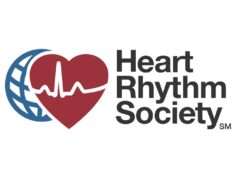
A prespecified analysis of data from the AUGUSTUS study, released at late-breaking session at the Transcatheter Cardiovascular Therapeutics scientific symposium (TCT 2019; 25–29 September, San Francisco, USA) and published online in Circulation, indicate that anticoagulation with apixaban and a P2Y12 inhibitor without aspirin should be the preferred strategy for patients with atrial fibrillation (AF) and acute coronary syndrome (ACS)—regardless of whether they are being managed with medical therapy or percutaneous coronary intervention (PCI)—as well as for those with AF undergoing an elective PCI.
Presenting the findings on behalf of the AUGUSTUS ACS investigators, Stephan Windecker (Bern University Hospital, Bern, Switzerland) pointed out that they were consistent across the three clinically important subgroups of patients with AF, and that the assessment of the antithrombotic strategy for the three cohorts is the only one that has included patients with medically managed ACS. “The safety and efficacy of antithrombotic regimens may differ between patients with AF who have ACS that is treated medically, or with PCI, and those undergoing elective PCI,” he said. “For that reason, we explored bleeding, death, and hospitalisation, as well as death and ischaemic events, by antithrombotic strategy in three mutually exclusive prespecified subgroups: patients with ACS treated medically, patients with ACS treated with PCI, and patients undergoing elective PCI.”
AUGUSTUS was an international, randomised trial in which a P2Y12 inhibitor was prescribed to all participants for the six-month duration of treatment. Additionally, up to 14 days after ACS or PCI, patients were randomised in a 2×2 factorial design to either apixaban, given at a therapeutic dose for stroke prevention, or Vitamin K antagonists (VKA), and to either aspirin or placebo. Randomisation was stratified by indication at the time of enrolment —ACS versus elective PCI—and patients with ACS were managed medically or with PCI, according to local practice. Apixaban and VKA were given in an open-label manner, whereas aspirin or matching placebo were administered in double-blinded fashion.
In all, 4,614 patients were enrolled, of whom 1,097 (23.9%) had ACS treated medically, 1,714 (37.3%) had ACS treated with PCI, and 1,784 (38.8%) underwent elective PCI. At six months, among patients treated with apixaban or VKA, the primary safety endpoint of International Society on Thrombosis and Haemostasis (ISTH) major or clinically relevant non-major (CRNM) bleeding occurred in 8.4% of patients in the ACS medically managed group, 12.8% in the ACS PCI group, and 15% in the elective PCI groups. Apixaban compared with VKA reduced ISTH major or CRNM bleeding in patients with ACS treated medically (hazard ratio [HR] 0.44, 95% confidence interval [CI] 0.28–0.68), ACS treated with PCI (HR 0.68, 95% CI 0.52–0.89), and in those undergoing elective PCI (HR 0.82, 95% CI 0.64–1.04, p interaction=0.052). It also reduced death or hospitalisation in ACS treated medically (HR 0.71, 95% CI 0.54–0.92), ACS treated with PCI (HR 0.88, 95% CI 0.74–1.06), and elective PCI (HR 0.87, 95% CI 0.72–1.04; p interaction=0.345). Apixaban resulted in a similar effect on death and ischaemic events in the ACS treated medically, ACS treated with PCI, and elective PCI groups, compared to VKA (p interaction=0.356).
Aspirin had a higher rate of bleeding than placebo in all three groups—ACS treated medically: HR 1.49, 95% CI 0.98–2.26; ACS treated with PCI: HR 2.02, 95% CI 1.53–2.67; elective PCI: HR 1.91, 95% CI 1.48–2.47 (p interaction=0.479). For the same comparison, there was no difference in outcomes among the three groups for the composite of death or hospitalisation (p interaction=0.787), and death and ischaemic events (p interaction=0.710).
In each of the subgroups, the percentage of patients with the primary safety endpoint of ISTH major or CRNM bleeding was lowest among those receiving apixaban and placebo (ACS medically managed 3.3%, ACS PCI 6.6%, elective PCI 10.5%) and highest among those receiving a VKA and aspirin (ACS medically managed 12.9%, ACS PCI 18.8%, elective PCI 21.8%). The cumulative incidence of death or hospitalisation at six months tended to be lower among those receiving apixaban and placebo (ACS medically managed 16.8%, ACS PCI 22.8%, elective PCI 24.7%) and higher among those treated with VKA and aspirin across the three subgroups (ACS medically managed 26.3%, ACS PCI 2.3%, elective PCI 28.6%)
In his presentation, Windecker listed the limitations of the study, which included that it was powered for the primary safety endpoint (ISTH major/CRNM bleeding), and therefore the data for the three reported subgroups are underpowered. In addition, the term dual antithrombotic therapy relates to the period after randomisation, as all patients received aspirin during their hospitalisation for the index ACS and/or PCI and for a median of six to nine days before randomisation. The study also does not address the optimal treatment duration for the combined anticoagulation and P2Y12 inhibitor regimen, as all patients were treated for six months, or the optimal short-term treatment duration of aspirin after PCI before initiation of dual antithrombotic therapy.
Writing in Circulation, Renato Lopes (Duke University Medical Centre, Durham, USA), Windecker et al conclude: “The choice of antithrombotic therapy in patients with AF and ACS and/or undergoing PCI reflects the difficult balance between mitigating bleeding versus reducing ischaemic and thromboembolic risk. The overall results of the AUGUSTUS trial, and the results of these subgroup analyses, support the use of apixaban, at the dose approved for stroke prevention in patients with AF, combined with P2Y12 inhibition without aspirin as the preferred treatment over a VKA-based regimen in patients with AF and ACS, managed medically or with PCI, as well as among patients undergoing elective PCI.”









